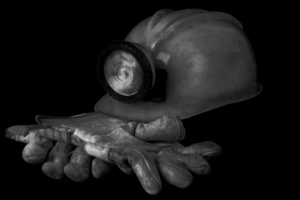 At the West Virginia Coal Association’s 42nd Annual Mining Symposium in Charleston, West Virginia today, Assistant Secretary of Labor Joseph A. Main highlighted strategic actions the Mine Safety and Health Administration has implemented in the past five years to better protect miners and positively affect the mining industry’s approach to safety.
At the West Virginia Coal Association’s 42nd Annual Mining Symposium in Charleston, West Virginia today, Assistant Secretary of Labor Joseph A. Main highlighted strategic actions the Mine Safety and Health Administration has implemented in the past five years to better protect miners and positively affect the mining industry’s approach to safety.
“While more work needs to be done, we have seen significant progress,” said Main.
In his remarks, Main outlined MSHA’s progress:
- Total mining deaths are down considerably since the 1990s – from an average of 96 per year to 45 annually in the first half of the current decade. Comparatively, average yearly coal mining deaths fell from 45 to 25. Fatality rates followed the same trends.
- In 2014, 16 coal miners died on the job, the lowest number ever recorded in the U.S.
- Compliance has improved as well. The number of citations and orders issued to coal mine operators in 2010 was approximately 96,352, compared to 62,828 in 2014. Respirable coal mine dust levels in underground coal mines have dropped successively to new lows since 2009, when MSHA launched its End Black Lung – Act Now campaign.
Main also highlighted a number of other agency reforms that began in 2010:
- As a result of MSHA’s worker voice initiatives, a record number of discrimination cases on behalf of miners were filed in 2014.
- A reformed Pattern of Violations program has helped reduce the number of coal mines with chronic violation records by more than 80 percent.
- During special impact inspections, which target mines with compliance problems, inspectors are successfully pinpointing safety and health problems and mine operators are making improvements more quickly.
- New rules have been put into place to prevent coal dust explosions and black lung disease and improve mine operator examinations to correct violations before miners are injured or killed. A new rule requiring proximity detection devices on continuous mining machines in underground coal mines will prevent accidents that can crush or pin miners.
- Extensive stakeholder outreach initiatives include including quarterly conference calls with hundreds of industry trainers around the country as well as an online single source page to augment their own training resources.
- Improved mine emergency response capabilities such as the development of state-of-the-art communication, tracking, mapping and atmospheric monitoring technologies will speed up mine rescue efforts.
- The backlog of contested violations by mine operators has dropped substantially from 89,000 in 2010 to 27,500 last November.
Main credited the mining industry for its efforts to improve mine safety and health by designing better dust control systems, leading the way on proximity detection technology, and complying with new safety and health regulations and other actions. He stressed, however, that an upswing in deaths in the metal and nonmetal sector is still cause for concern.
A copy of Assistant Secretary Main's remarks is available here.


